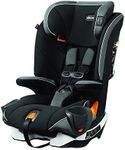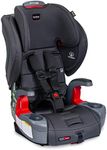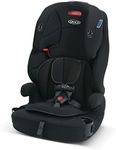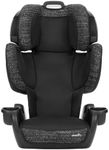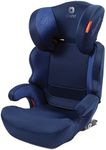Buying Guide for the Best Booster Car Seats
Choosing the right booster car seat is an important step in keeping your child safe and comfortable as they grow. Booster seats are designed for children who have outgrown their forward-facing car seats but are not yet big enough to use the vehicle’s seat belt alone. The main goal is to ensure that the seat belt fits your child properly, providing the best protection in case of a crash. When shopping for a booster seat, it’s important to consider your child’s age, weight, height, and your vehicle’s compatibility. Always check that the seat meets current safety standards and is easy to install and use correctly every time.Type of Booster SeatThere are two main types of booster seats: high-back and backless. High-back boosters provide head and neck support, making them ideal for vehicles without headrests or for younger children who may still need extra support. Backless boosters are more compact and easier to move between cars, but they require the vehicle seat to have a proper headrest. Choosing between these depends on your child’s size, maturity, and your car’s seat design. If your child tends to fall asleep in the car or your vehicle lacks headrests, a high-back booster is usually the better choice.
Weight and Height LimitsEvery booster seat comes with specific weight and height limits, which indicate the range of child sizes the seat is designed to protect. These limits are important because using a seat outside of its recommended range can reduce its effectiveness in a crash. Typically, booster seats are suitable for children who weigh at least 40 pounds and are at least 4 years old, but the upper limits can vary. Always check the manufacturer’s guidelines and make sure your child fits within the recommended range for the seat you’re considering.
Seat Belt PositioningA booster seat’s main job is to position the vehicle’s seat belt correctly across your child’s shoulder and lap. The lap belt should lie flat across the upper thighs, not the stomach, and the shoulder belt should cross the middle of the chest and shoulder, not the neck or face. Some booster seats have guides or adjusters to help with this. When choosing a seat, look for one that makes it easy to achieve the right belt fit for your child and your car’s seat belt design.
Ease of Installation and UseA booster seat should be easy to install and use correctly every time. Some models have features like LATCH connectors to secure the seat when not in use, while others simply rest on the vehicle seat. Consider how often you’ll need to move the seat between cars and whether your child will be buckling themselves in. A seat that’s simple to use encourages consistent, correct use, which is key for safety.
Comfort and AdjustabilityComfort features like padded seats, adjustable headrests, and armrests can make longer rides more pleasant for your child. Some booster seats also have adjustable width or reclining options. If your child will spend a lot of time in the car, or if you want the seat to grow with them, look for a model with these comfort and adjustability features.
Safety Standards and RatingsAll booster seats sold must meet minimum safety standards, but some may offer additional safety features or have higher safety ratings from independent organizations. Look for seats that have been tested and certified to current standards, and consider checking for additional ratings or reviews from trusted sources. This can give you extra peace of mind about your choice.

